I partly discuss this conservatory in my previous blog: A Day in Gardens by the Bay in which I featured the main attractions that can be explored in the garden. For this time around, this article is all about the sections of the Flower Dome. Join me as I step into Singapore's Flower Dome: The Home of Floras, Trees and Cultivars.
Flower Dome / Video Credit: Kelvin Pang via Youtube
Here is a video of the Flower Dome starts at the entrance. You can see in the video the whole dome and the Flower Field which is at the center of the dome the one with a somewhat like a temple. I guess the festivity setting is a Chinese New Year set up since this video was published January of 2017.
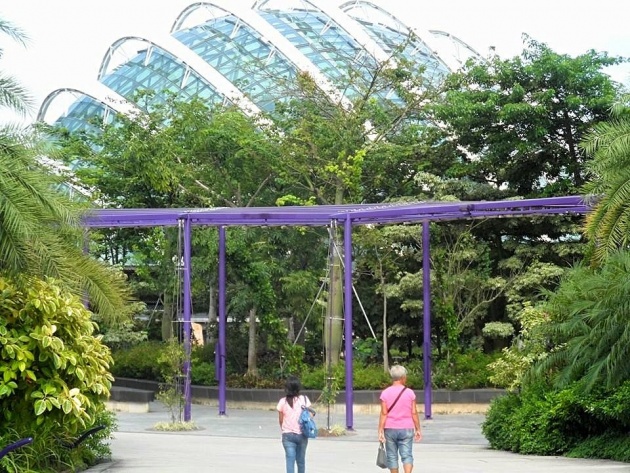
Outside view of the Flower Dome / Photo Credit: Dimpsy
One of the two conservatories in Gardens by the Bay that have won numerous awards for sustainability features, architectural beauty and for an innovative engineering is the Flower Dome. It was listed as the largest glass-domed conservatory in the world by Guinness World Records in 2015. With a ground area of 1.2 hectares, this conservatory has a cooling indoor temperature that ranges from 23°C - 25°C. A vast array of flora and plant species outside tropical regions as well as varieties of plants that have been produced by selective breeding for cultivation.
- derived from a Latin name in Roman mythology "Flora", the goddess of plants, flowers, and fertility.
- the process of assembling selected plants for the desired character that is preserved during breeding of the specimens.
Source: Wikipedia
EXPLORING PARTS OF FLOWER DOME
There are parts in the garden that you need to explore when you're inside the Flower Dome. So let me welcome you to the Home of Floras, Trees and Cultivars -- the Flower Dome.
FLOWER FIELD

Flower Dome's Flower Field Display in Deepavali Theme / Photo Credits: Dimpsy
The heart of the garden is the Flower Field where you can see a color changing displays of flowers associated with the festivity, season or theme inspired setting. By the time I was here it was a Diwali or Deepavali Festival set up. A Hindu Festival of lights that are celebrated annually between mid-October and mid-November so all the decorations in the Flower Field and other sections of the garden have a little touch of colorful Indian decorative arts. Colorful fabric lanterns hung everywhere. Vibrant colors of ceramic pots and wood carved elephants added the festive ambiance. Indian herbs and spices in small sacks were also displayed in a small section of the garden.But what caught my attention was the Rangoli the last photo above. A colorful art form that is originated in the subcontinent of India that is created on the floor inside a decagon box using vibrant colored sand, rice, flour and flower petals.
Diwali or Deepavali
- derived from the word "dipam" which means "light or lamp" and "oli" which is a "glow of light".
- it's a victorious celebration of light over darkness, knowledge over ignorance, right over wrong, good over evil, and hope over despair.
- a celebration dedicated to the wife of Lord Vishnu who is considered to be the goddess of wealth and prosperity.Rangoli
- is a Hindu artwork that is famous during the celebration of Diwali or Deepavali and is made of colored rice, flour, sand and flower petals.
Source: Wikipedia
SUCCULENT GARDEN
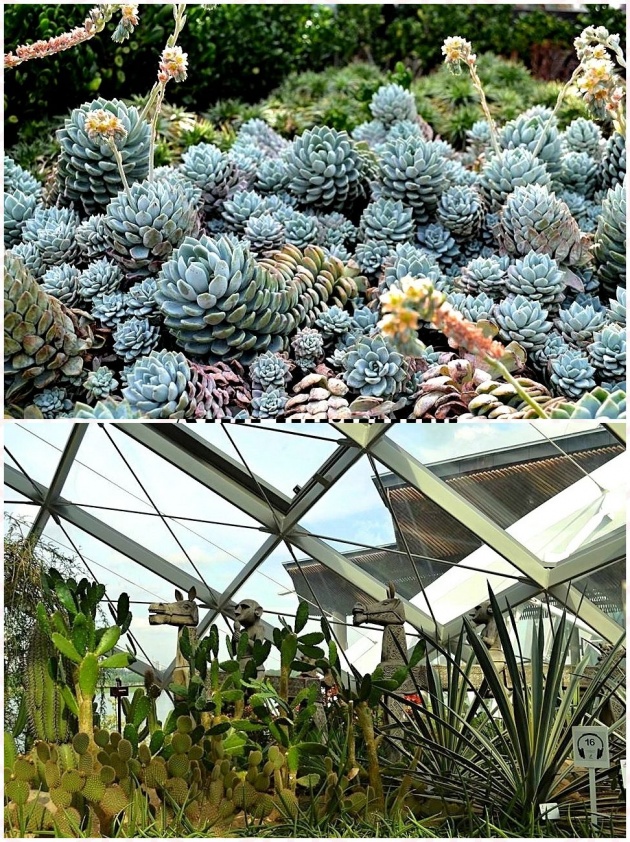
Succulent Plants / Photo Credis: Dimpsy
On this part of the garden lies the family of Succulents. These are plants that store water into their thick, fleshy and swollen stems or leaves that adapt its growth in harsh climates such as deserts, but they also belong in high alpine regions, coastal areas, forest settings, and dry tropical areas. They often grow in areas having low rainfall and with high temperatures. Nowadays, people use succulent plants as a hobby and as an ornament but others venture it into business. The most common succulent plant is the Aloe Vera that stores water in their fleshy stems or leaves.
THE BAOBAB AND BOTTLE TREES
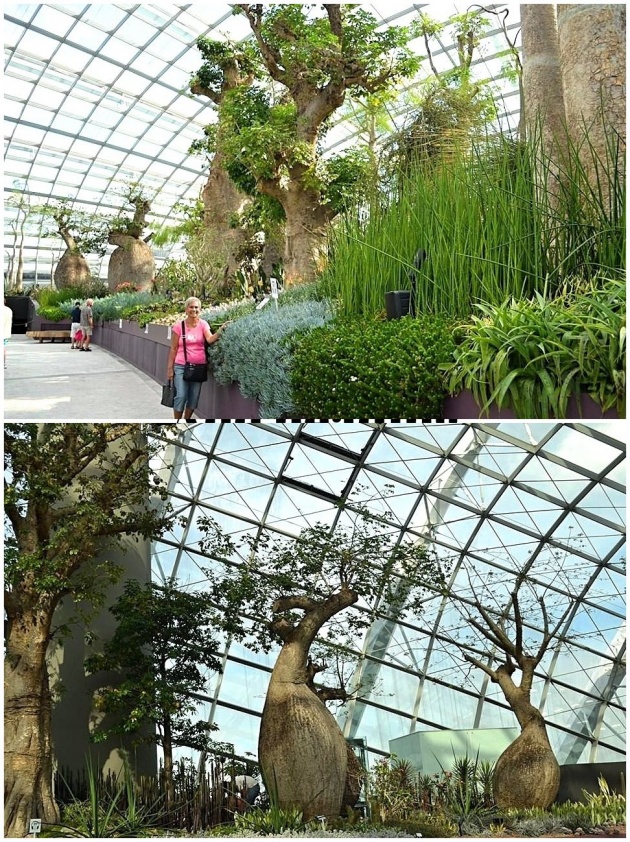
Baobab and Bottle Trees / Photo Credits: Dimpsy
The above photo is the Baobab tree--the largest tree in the succulent garden and the largest succulent plant. The height of the Baobab tree can reach up to 25 meters tall having a trunk diameter of up to 11 meters. During rainy periods, the trunk will store the accumulated rainwater for up to 120,000 liters of water. On the other hand, the lower photo shows the Bottle Trees or commonly known as the drunken tree or silk floss tree. Same goes with the Baobab tree, the large swollen trunk will also store the water to use during dry season. Its trunk is covered with large prickles to scare off thirsty animals. These trees naturally grow in most countries specifically south of the Sahara except in Central Africa since these species are restricted to areas that have little rainfall.
AUSTRALIAN GARDEN
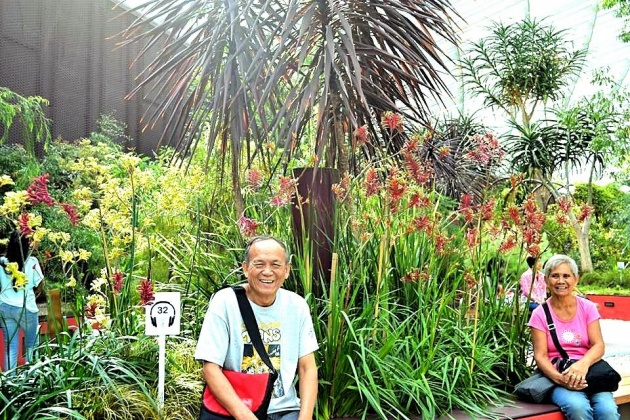
A section of Australian Garden / Photo Credit: Dimpsy
Most floras and other plant species in this garden showcase species that comes from South Australia and Western Australia. These are plants that can survive during dry seasons. Behind from where my parentals are situated, are species samples in the Australian Garden. The yellow and the red flowers are what you call Kangaroo Paw or the Australian Sword Lily that has a scientific name of Anigozanthos spp. These are natives of Australia, particularly in the Western part of the country. Behind my dad is a Cabbage tree or Cabbage Palm with a scientific name of Cordyline Australis -- the most iconic trees in New Zealand. The long leaves are used for weaving mats, baskets, clothing and some decorative interiors for the wall panels.
SOUTH AFRICAN GARDEN
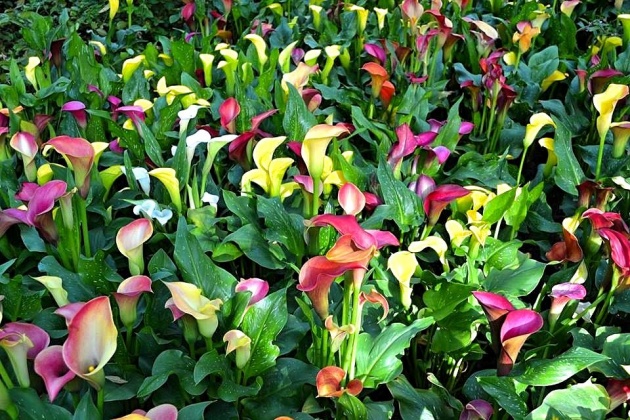
Calla Lily or Arum Lily / Photo Credit: Dimpsy
Witness a sea of colorful Calla Lily or Arum Lily in South African Garden. Its habitat is distributed to Southern Africa, specifically in Lesotho, Mozambique, South Africa and Swaziland. You can also find Tree Aloe, Forest Gardenia, Golden Daisy Bush, Bird of Paradise and a lot more.
SOUTH AMERICAN GARDEN
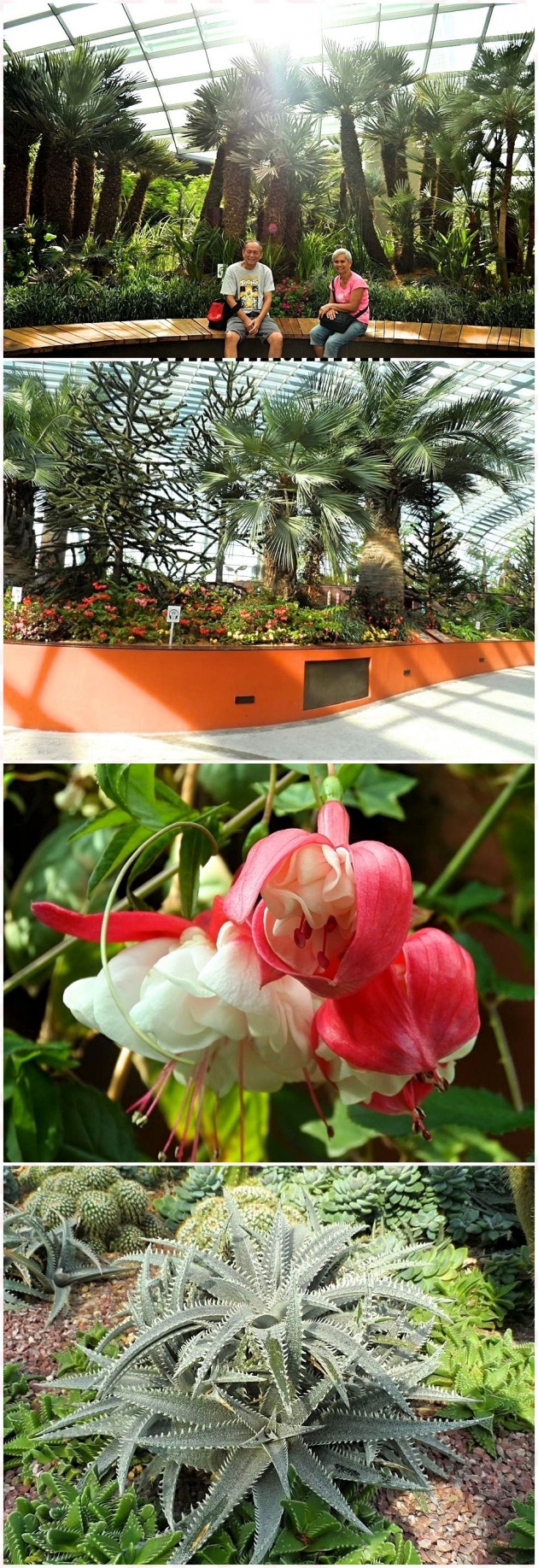
South American Garden / Photo Credits: Dimpsy
The plants in the South American Garden are consist of exotic plants from Central Chile. Most trees in this garden are slow growing plants that belong to the Arecaceae family or the Palm family, just like the Blue Needle Palm or the Thatch Palm in photo #1. The second photo on the left side that looks like a pine tree is what they call Monkey Puzzle Tree. The name was derived from the sharp leaves that covered the entire tree that even monkeys would thwart to climb it. Photo #3 is a Lady's Eardrops that is well known for their beautiful pendulous flowers which have been resembled to drop earrings, thus, it has the common name of Lady's Eardrops. Finally, the last photo is a Chilean Puya (looks like a pineapple plant) that grows on arid slopes in Andes, Chile. It is also a slow-growing plant that would take 20 years or more to flower. This type of plant is a monocarpic species which means a single plant will flower only once and then die.
CALIFORNIAN GARDEN
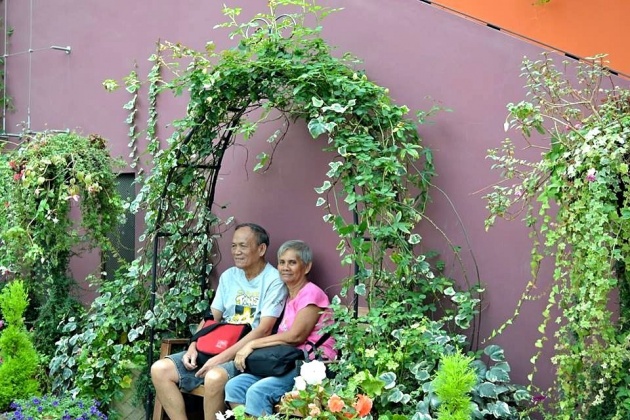
Californian Garden / Photo Credit: Dimpsy
What I mostly see in Californian Garden are shrubs, climbing shrub plants and some trees. There is a garden bench at the wall that has a metal arch where it was covered with climbing shrubs that drew my attention while some lilacs and other Californian flowers on both sides of the passageway and so I never missed this photo opportunity for my parentals.
MEDITERRANEAN GARDEN

Mediterranean Garden / Photo Credit: Dimpsy
This garden showcases Date Palms a native to Canary Island, Stone Pines naturally grows in the Mediterranean for decades, while figs are flowering plants that belong to the mulberry family and other crops that are characterized in Mediterranean region can also be seen in this garden. There is a must see in Olive grove and that is the Olive tree that aged 1000-year-old. Bad thing I didn't have any snap of it so if you happen to be in Flower Dome make sure you take a selfie before leaving the conservatory.
So there, our tour at Flower Dome: the home of floras, trees, and cultivars has been concluded. But before I will do an exit, I will leave you a video of the Flower Dome during night time.
Flower Dome at night / Video Credit: rendezvous009 via Youtube
It's amazing how they organize the different themes or festivity. I love how the dome looks at night. I just can't tell what exactly the set up is all about. But still, it amazes me. This goes down to my to go list for my next visit.
Thank you for reading and I hope you enjoyed the tour. Happy reading!
For the admissions, operating schedules, closure dates and other informations you may click it here.
Care to Chat? Here's a Querlo Chat for you.
https://www.querlo.com/chat/6759
~ ♥ ~ ♥ ~ ♥ ~
Singapore related blogs that you might want to read:
Cloud Forest: A Surreal Cloud Walk
DUCKtours: AN AMPHIBIOUS ADVENTURE
A Must See and Do in Singapore Zoo
A Walk in the Wild at Singapore Zoo - Part II
A Walk in the Wild at Singapore Zoo - Part I



